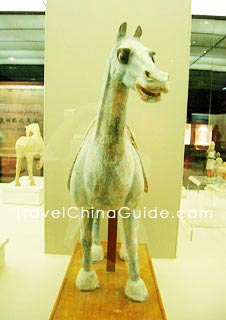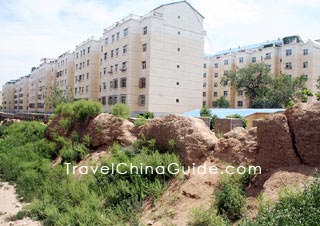Urumqi History
 |
| Pottery Horse exhibited in Xinjiang Museum |
Until the Han Dynasty (206 BC-24 AD), the government stationed troops there to reclaim wasteland near to the city in order to ensure security for the Silk Road. In 640, during the Tang Dynasty (618-907), the first official prefecture was set up to administer the area on the north slope of the Tianshan Mountains, namely the Tingzhou State. During this period, Urumqi was called Luntai County which was under the control of the Tingzhou State with the other three counties. It was once a military stronghold for the Tang Dynasty to defend against their enemy.
The city's fortunes began to rise in the middle of the Qing Dynasty (1644-1911) when the Emperor Qianlong stationed troops and constructed an earthen city in the south of what is now Urumqi. The first step of the city's building project was taken in 1758. In 1763 , the city
 |
| Ruins of Gongning City Wall built in the Qing Dynasty |
Nowadays, as the capital city of the Xinjiang Uygur Autonomous Region, Urumqi includes five districts and the Urumqi County. Because of its particular position, it is a transportation hub for linking the south and north area of the Tianshan Mountains as well as connecting Xinjiang and central China.
- Last updated on Jul. 25, 2019 -